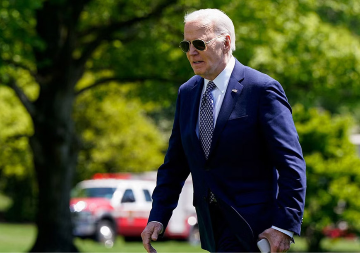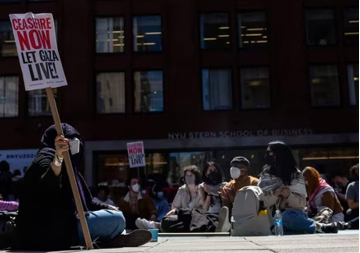
World Population Day presents an occasion to reflect on the global population and demography achievements and challenges. Today, the world population stands at over 8 billion, signifying the amazing human progress in medical science in addressing biological threats to human life. Yet, the prolonged COVID-19 pandemic,
which claimed the lives of close to 7 million people, showed how unanticipated challenges can significantly upend the advances of mankind. In addition, the world is also grappling with war, climate change, political conflicts and unprecedented and 360-degree disruptions from
artificial intelligence and ever-advancing technology.
Different population-related challenges confront different parts of the world. Many advanced nations face population decline, while
India has overtaken China as the most populous nation. India’s demographic dividend, with a high working population (51-56 percent) in 2010-2056, places it in a critical position at a domestic and global level that will be determined by how the
youth population is gainfully employed and involved in policy discourse. This would require moving India’s population away from the agrarian sector, which still employs more than
40 percent of India’s workforce. Such economic transition of the population would need expanding employment opportunities in urban centres of India while increasing non-farm rural employment. But are Indian cities prepared to embrace more migrants? Given the housing crisis in most of India’s big cities, urban centres exhibit a hostile environment for those belonging to economic and social marginal groups.
Studies have shown how India’s urbanisation is exclusionary, stifling its expected growth over time.
Cities need to plan by accounting for the urban informal economy and, subsequently, for a commensurate level of affordable and rental housing.
There has been a major policy thrust from the Government of India in the last two decades. Policies such as the Jawaharlal Nehru National Urban Renewal Mission and Smart Cities Mission have aimed at remaking Indian cities and bringing them to global standards. While such policies have focused on piped water supply, sanitation, public transport and better roads, they have often been incapable and insufficient to cater to the needs of the ever-expanding urban population—giving rise to large slum pockets with poor housing and essential civic amenities. Cities like Mumbai (economic capital) and Bengaluru (IT hub) face severe strains while managing the population pressures, exposing the lacuna in planning. On the other hand, nearly all the mega and metropolitan cities across India face extreme weather events, forcing citizens to invest more to ensure a comfortable living scenario (buying air purifiers and air conditioners). The concentration of people in the few megacities of India needs attention. In North, East, and Northeast India, there are no major metropolitan cities except New Delhi and Kolkata. Spreading out the urban population across cities should be a major policy focus.
One of the key factors determining the urban outcome in a South Asian context is how the informal sector (economy and housing) is managed. In many cases, people involved with the informal sector are seen as a deterrent to cities achieving their potential. However, their labour is inevitable for the city to function on an everyday basis. Given that India’s formal sector is yet to reach its full potential, more people will rely on the urban informal economy for livelihood options. Therefore, cities need to plan by accounting for the urban informal economy and, subsequently, for a commensurate level of affordable and rental housing. Such planning would require state agencies to engage with interest groups in the informal domain. The Ahmedabad Municipal Corporation’s (AMC) partnership with the NGO Self Employed Women’s Association (SEWA) and community organisations for solid waste management and infrastructure maintenance provides a
successful example of such participatory planning. Through this partnership, the AMC has also maintained the tenure security of informal settlements.
Two major thrust areas must be considered to make the most out of India’s population growth to drive India’s urbanisation. Firstly, the public interest of the city cannot be left entirely to the private developers. The housing crisis across Indian cities testifies that private real estate development cannot accommodate the social realities and requirements. For instance, in Mumbai, high levels of Floor Space Index (FSI) relaxation for redevelopment projects have led to the proliferation of high-rise buildings in the last few decades. However, these high-rise buildings have barely addressed Mumbai’s housing crisis while putting
additional pressure on the local infrastructure.
Additionally, the failure of grandiose schemes for slum rehabilitation, created to make Mumbai “slum-free”, has worsened the situation, with nearly half of Mumbai’s population continuing to live in abysmal conditions. This calls for critical and urgent government interventions for preparing urban housing projects aligned with the socioeconomic realities to make housing affordable and accessible for most sections of society. We need to rethink the role of state agencies such as the Housing and Urban Development Corporation (HUDCO) and City Improvement Trusts to make cities more liveable and inclusive. Secondly, a regular update of the urban census, with a focus on migration, employment and housing requirements, can be formulated. Given how fast things are changing, a decadal census for urban India might be inadequate. Local administrative units (such as municipalities) must be empowered to gather relevant data. To that end, Indian Statistical Institute (ISI) can play a key role in integrating population dynamics with urban governance. Robust data collection and management will be essential to frame effective urban policies, and it will also help in evaluating the progress of different urban schemes, such as Smart Cities Mission, Atal Mission for Rejuvenation and Urban Transformation (AMRUT) on a regular interval.
India can learn from megacities like New York, where people’s consent is non-negotiable in building rules in residential areas, ensuring no unmanageable pressure on neighbourhood infrastructure.
Densely populated cities make capital-intensive mega public projects economically feasible, with relatively
low-per unit costs. This opens the possibility to expand public infrastructure for education, healthcare and transport. The challenge is to make them affordable and accessible to all sections of society to achieve equitable outcomes. Such initiatives, including climate-resilient planning, must cover all the towns and cities, regardless of their scale and size. Another major focus should be consolidating participatory governance, particularly in cities where citizens’ actions can play a critical role in making cities suitable for sustainable growth. In this regard, India can learn from
megacities like New York, where people’s consent is non-negotiable in building rules in residential areas, ensuring no unmanageable pressure on neighbourhood infrastructure. Adopting such practices will strengthen urban democracy in India, potentially suturing a productive correlation between India’s demographic dividend and urbanisation. World Population Day 2023 is an apt occasion to rethink strategies to make the most of India’s population and demographic dividend.
Snehashish Mitra is a Fellow with the Urban Studies at the Observer Research Foundation.
The views expressed above belong to the author(s). ORF research and analyses now available on Telegram! Click here to access our curated content — blogs, longforms and interviews.



 World Population Day presents an occasion to reflect on the global population and demography achievements and challenges. Today, the world population stands at over 8 billion, signifying the amazing human progress in medical science in addressing biological threats to human life. Yet, the prolonged COVID-19 pandemic,
World Population Day presents an occasion to reflect on the global population and demography achievements and challenges. Today, the world population stands at over 8 billion, signifying the amazing human progress in medical science in addressing biological threats to human life. Yet, the prolonged COVID-19 pandemic,  PREV
PREV


